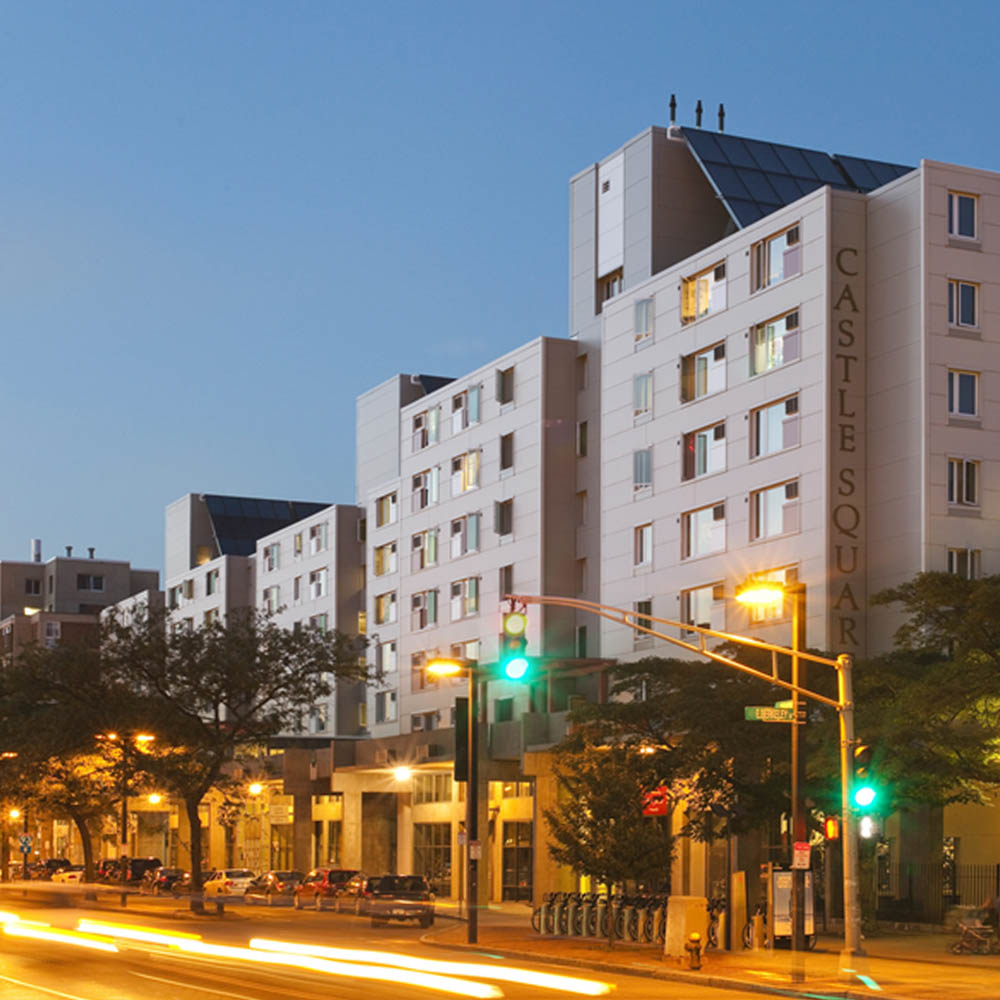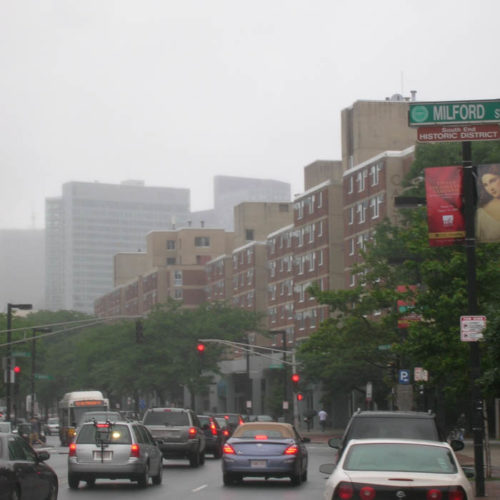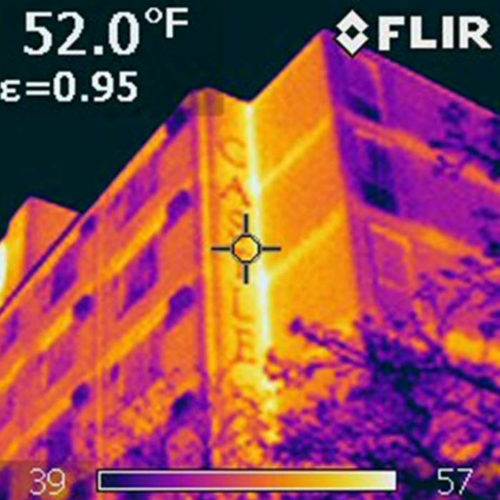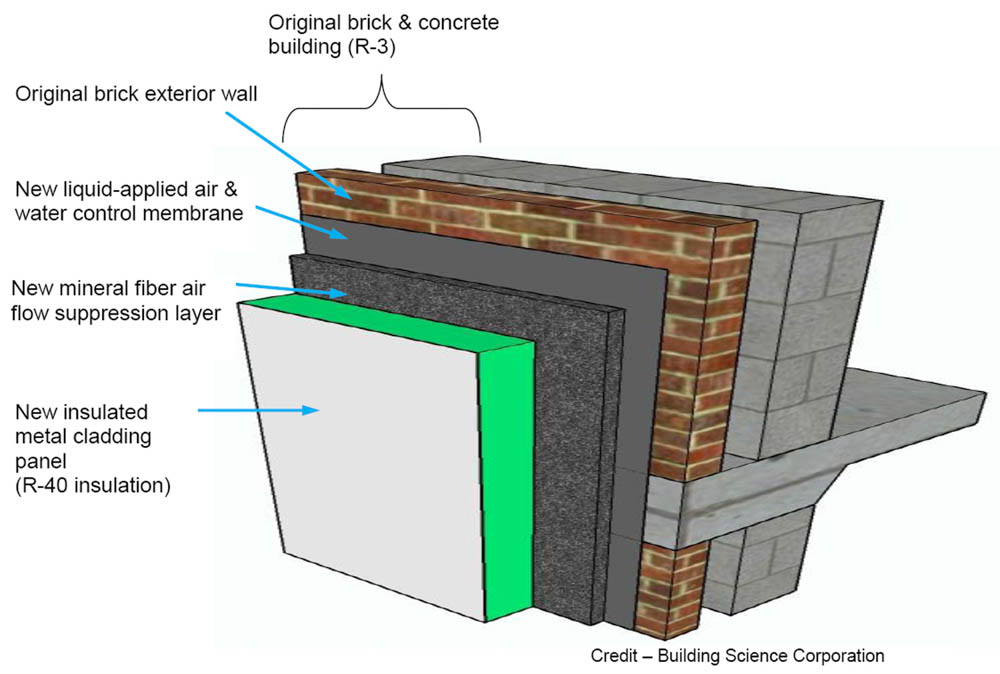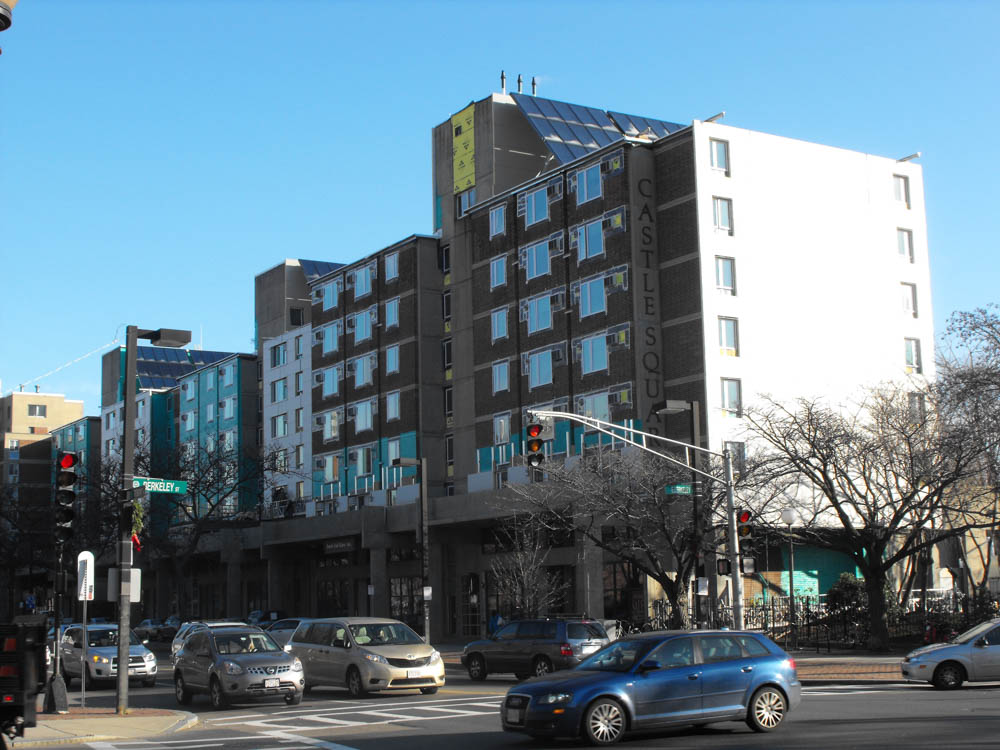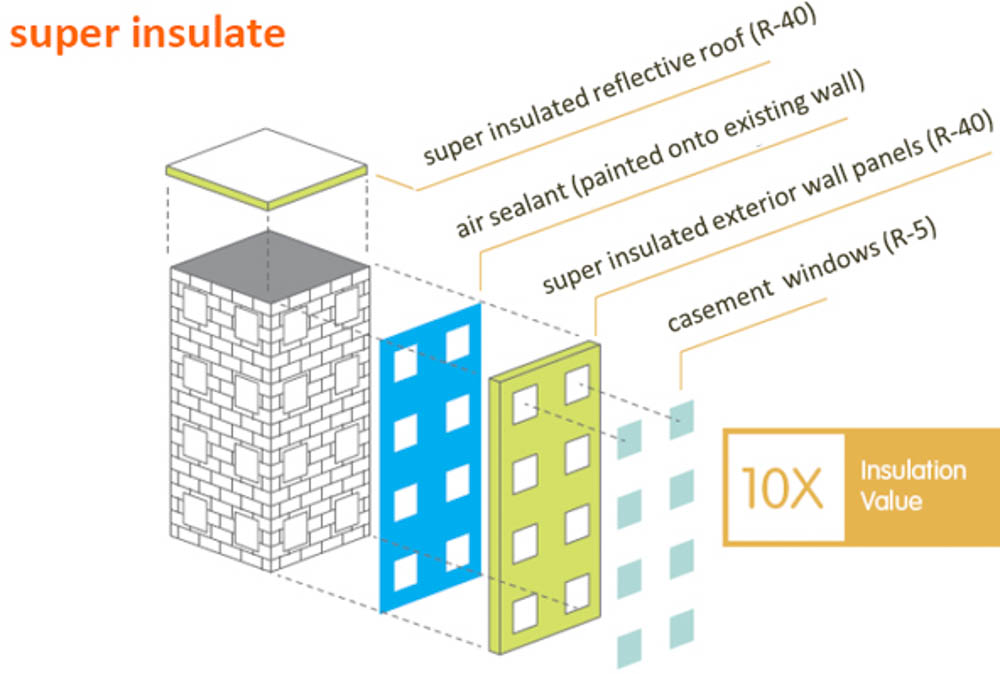Castle Square Deep Energy Retrofit
Castle Square Apartments became the first large-scale building in the US to demonstrate deep energy retrofit principles, while improving health and comfort. Deep energy retrofits are defined as renovations with 50 percent or higher energy savings. At Castle Square, we strived to create a model for addressing climate change by tackling energy consumption in existing buildings without costly and energy intensive gut renovations.
A product of urban renewal, this 1960s 192-unit seven story building had concrete walls with brick infill and no insulation (R-3 wall assembly), and the roofs had minimal insulation (R-20). Air leakage was extensive. Windows were poorly insulated aluminum sliders (R-1.7). Central atmospheric boilers (70 percent efficiency) provided heating and hot water. The pipes had no insulation. Apartments had inefficient through-the-wall air conditioners. Residents complained of poor air quality and of being cold in the winter and stifling in the summer.
At Castle Square Apartments, the seven story buildings were literally wrapped in a new super-insulated shell, increasing insulation by a factor of ten to drastically cut energy usage and transform the property’s look. Insulation and extensive air sealing and compartmentalization meant that high efficiency mechanical equipment could be downsized. Solar hot water was also installed. We utilized green materials, water-efficient fixtures, green flooring, improved ventilation, construction material recycling and ecologically sensitive landscaping. The building was certified LEED Platinum.
This project is especially unique because it is not a gut rehab. Residents stayed in their apartments during the renovation, with minimal disruption.
Castle Square provides affordable housing to low- and moderate-income residents. The property is uniquely owned by Castle Square Tenants Organization. In the early 1990s when the property was threatened to go market rate, tenants succeeded in preserving the property’s affordable housing designation for 100 years. Hundreds of residents participated in the design process and residents had final approval on renovation decisions.
CLIENT
Castle Square Tenants Organization
WinnCompanies
TEAM
Biome Studio
Building Science Corporation
Elton + Hampton Architects
Petersen Engineering
Pinck & Co. Inc.
Rees-Larkin Development
Viva Consulting
Klein Hornig LLP
Backus Associates
CWC Builders Inc.
